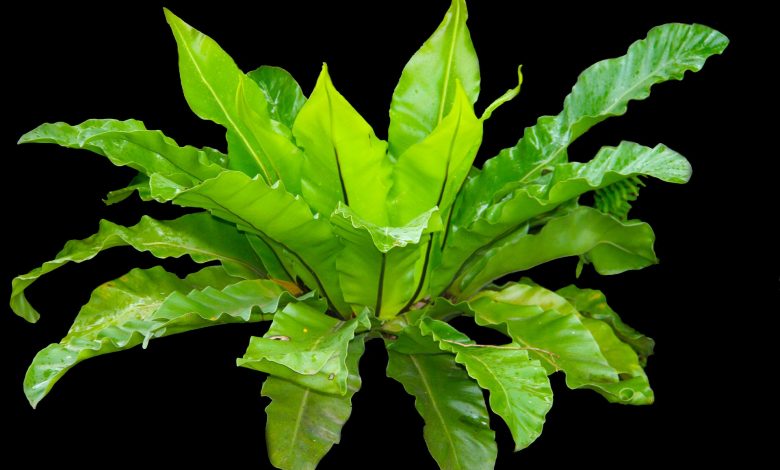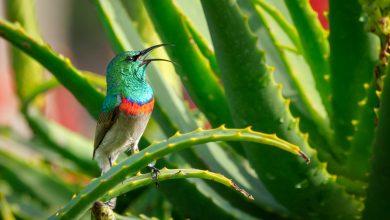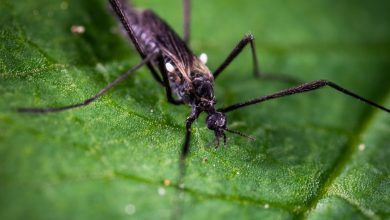How to Care for Asplenium Nidus (Bird’s Nest Fern)

Ferns are an ancient plant species that have been on this earth for longer than you can likely imagine. Ferns began appearing in the fossil record as long as 360 million years ago, and there are over 12,000 different species living in the world today. However, the ferns that plant lovers enjoy today are closer to 145 million years old. The Asplenium nidus, also known as the bird’s nest fern or nest fern, doesn’t look like your typical fern and can add a fun, green vibe to any room in your house. As a tropical fern, the bird’s nest variety requires a touch of additional care to keep them at their happiest. However, the extra bit of work is well worth it. Here we’ll go over the background of the bird’s nest fern and how to care for this distinctive houseplant.
Botanical Information
The Asplenium nidus is a unique plant known as an epiphyte, an organism that grows off the surface of other plants. An epiphyte survives and grows by drawing nutrients and moisture from rain, air, and debris accumulating around the parent plant.
Epiphytes don’t just take and not give back, however, as they play an important role in nutrient cycles and add to the diversity of the ecosystem. For many species, epiphytes are an important source of food. Organisms such as animals, bacteria, and fungi all benefit from the rich habitat formed by epiphytes. Rather than affecting the host plant negatively, as a parasite would, epiphytes cause no negative effects.
Examples of other epiphytes in the ecosystem are lichens, liverworts, mosses, and algae in temperate zones and orchids, cacti, bromeliads, and ferns in tropical zones. Epiphytes make for excellent houseplants due to their lack of soil and water requirements.

Native Habitat
The bird’s nest fern is a tropical plant that grows natively in most tropical regions around the world, including Hawaii, eastern Australia, Polynesia, eastern Africa, India, and southeastern Asia. As a tropical plant, the bird’s nest fern can only grow in an outdoor environment in U.S. hardiness zones 11 to 12, which limits it to Hawaii and select parts of southern California.
Flower
There is no flower on the bird’s nest fern. It is grown purely for its striking foliage.
Appearance
The bird’s nest fern looks like no other fern most people are used to seeing. Its leaves are wide and strong and feature a wavy pattern along the edges. As the leaves age, thin pencil-like like lines are seemingly drawn from either side of the leaf’s spine in an upward fanning design. The leaves grow in a circular pattern around the bottom middle of the plant, similar to the way a Hosta grows.

Leaves
The leaves are the calling card of the bird’s nest fern. Technically called fronds, the leaves grow between 20 and 60 inches long and can grow as wide as four to eight inches across. Their light green and crinkled appearance is similar to banana leaves.
How to Care for Bird’s Nest Ferns
The bird’s nest fern thrives in warmer temperatures with high humidity and full to partial shade.
Sunlight
The bird’s nest fern is used to getting plenty of daytime shade and ideally appreciates filtered light at the high end of sun exposure. The only direct sun a bird’s nest fern can handle is morning light. To avoid direct sunlight during the day, place your plant near a north or east-facing window.
Water
As a tropical plant, bird’s nest ferns are used to constant moisture. You do not want to drown your plant, but you do want to keep the soil moist. Water your plant one to two times per week, depending on how wet or dry the soil appears. Avoid watering straight on top of the plant, as water will pool in the middle nest, which can cause rot and mold. Place your water straight onto the soil at the base of the plant rather than over the top.
Soil
The bird’s nest fern does not need a lot of soil to grow, as it is used to growing on top of trees and other plants. Use a loose organic compost or a rich peat-based potting mix. Don’t pack the soil too tight and make sure that it has strong draining characteristics.
Fertilizer
The growing season for the bird’s nest fern is typically from April to September, and during this time, you can add fertilizer once a month. You want to avoid using too much fertilizer, so dilute it with a little more water than you typically would. Too much fertilizer will cause the plant to grow brown or yellow leaves. Apply fertilizer in the same way you water the plant and avoid putting fertilizer straight into the middle of the nest. During the winter, the plant will be resting, so avoid further fertilization once summer ends.
Temperature and Humidity
Humidity is the key to keeping your bird’s nest fern happy. A confined space like a bathroom can surprisingly be the perfect place for your bird’s nest fern to stretch out its rumpled leaves. Make sure the temperature is above 68 degrees Fahrenheit and avoid placing the plant near a drafty window if you live in a colder climate. While it may be unsightly, running a humidifier near the plant is ideal for keeping a bird’s nest fern in its happy place.
Toxicity
Bird’s nest ferns have no toxicity to humans, cats, or dogs.
Pests and Disease
There are no diseases or noteworthy pest problems bothering bird’s nest ferns.
Propagation
Unlike other varieties of ferns, Asplenium nidus cannot be divided for propagation. As the plant is typically grown from a tiny tissue culture or spore, it can be difficult for most home growers to propagate the plant.
Cultural Significance
Bird’s nest ferns have been used historically in their native environments as medicine for halitosis, sores, asthma, and general weakness.
In Taiwan, the sprouts of bird’s nest ferns are eaten as a vegetable. Traditionally, the sprouts are cut into one-inch slices and then sautéed with chili peppers and garlic.

Other Types of Tropical Ferns
Most ferns have some sort of tropical background, and many species are found in tropical rainforests around the world. Here are four more ferns you can consider growing alongside your bird’s nest.
Japanese Painted Fern
Athyrium niponicum
The Japanese painted fern gets its name from its delicate leaves, which appear to be painted by tiny brushstrokes of silver, red, and blue. The Japanese painted fern is perfect for adding color and interest to any shade garden. A soft morning sun followed by heaps of afternoon shade will keep the Japanese fern happily spreading its distinctive foliage. Keep the soil moist and make sure that the soil drains well. Like the bird’s nest fern, Japanese painted ferns appreciate soil that is rich with organic matter and does not need much fertilizing.
Keep an eye out for a few high-performing cultivars. The silver and red ‘Pictum’ was named the perennial plant of the year in 2004. The shimmering ‘Burgundy Lace’ provides picturesque silver leaves with deep burgundy stems. And the ‘Wildwood Twist’ offers uniquely twisting fronds.
Maidenhair Fern
Adiantum
One of the most distinctive varieties of ferns is the maidenhair. While it can be particularly picky about its growing conditions, once you get them right, you will be rewarded with a beautiful specimen. Like the bird’s nest ferns, the maidenhair appreciates filtered morning sun and will scorch with direct sunlight. It also appreciates a moist, humid environment, and can be the perfect houseplant to spruce up a bathroom. Its appearance is similar to a large cilantro plant, with small delicate leaves sprouting from thin branches.
Musk Fern
Phymatosorus grossus
If you’re interested in growing a fern with leaves that appear like a squid’s tentacles, the musk fern is a must-own. Rather than small, delicate leaves, the musk fern features long individual leaves covered in speckled orange spots. Native to tropical Asia, the musk fern now grows throughout Hawaii. Its glassy fronds feature a vanilla scent, and its uniquely decorated leaves add a head-turning element to any room.
Staghorn Fern
Platycerium bifurcatum
Formerly a rare species to find, staghorn ferns are luckily now widely available and provide a distinctly different appearance than most other ferns. Like bird’s nest ferns, staghorn ferns are epiphytes. They feature two different types of leaves: shield fronds and antler fronds. The more prominent antler fronds get their name from their resemblance to a moose or deer’s antlers. The fronds are a smokey shade of green, resembling the look of sage leaves.
Native to tropical regions in Australia, the staghorn fern differs from many other varieties with their appreciation for good old-fashioned sunlight. This is not a fern that you want to place in a shade garden or near a north-facing window. Staghorn ferns also differ from other previously mentioned varieties in that they also appreciate fertilization to stimulate growth. Feed your staghorn fern monthly with a balanced fertilizer during the growing season and reduce to fertilizing once every other month during the winter.



